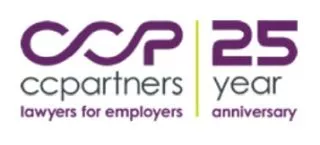On April 11, 2020, legislation was enacted to implement the Canada Emergency Wage Subsidy ("CEWS"). The CEWS is intended to allow employers facing financial challenges to keep employees on payroll and recall those employees who have already been laid off as a result of the COVID-19 pandemic – even if unable to actively perform work for the employer. Employers were said to be required to make "best efforts" to top-up employees' to 100% of their pre-crisis remuneration, although the legislation does not contain any language with respect to top-ups.
We have now received further insights into the application process and eligibility criteria and have updated this publication accordingly.
The CEWS is retroactive to March 15, 2020 and available to eligible employers for a period of 12 weeks until June 6, 2020. The legislation allows for further CEWS claim periods to be added by regulation until September 20, 2020.
Overview of the CEWS
The CEWS will allow eligible employers to access a weekly subsidy calculated by the number and type of eligible employees they have, and the amount and type of pay they received before and during the crisis. There is no limit on the total subsidy amount that an eligible employer may claim, subject to caps on remuneration for each employee.
The CEWS is enacted largely through amendments to the federal Income Tax Act, so employers are well advised to discuss their applications with their tax accountants.
Calculation of Subsidy Amount
The subsidy is calculated as follows:
|
For each qualifying period, A-B-C+D, where: |
||
|
A = |
Total amount for all eligible employees for each week in the qualifying period, the greater of X or Y, where: |
|
|
X= |
The least of the following:
|
|
|
Y= |
The least of the following:
|
|
|
B = |
10% Temporary Wage Subsidy for Employers amount (must be the eligible amount for the period, even if the employer did not reduce their related payroll remittances by that amount) |
|
|
C = |
Total of amounts received by employees through ESDC's Work-Sharing program for any weeks in the qualifying period |
|
|
D = |
If the employer has any eligible employees on leave with pay: |
|
|
|
|
|
The Government of Canada has also released a subsidy amount calculator which can be accessed here.
The pre-crisis remuneration for a given employee is based on the average weekly remuneration paid between January 1, 2020 and March 15, 2020, excluding any seven-day periods in respect of which the employee did not receive remuneration. Eligible remuneration includes an employee's salary, wages, and other taxable benefits but does not, for example, include amounts received from stock option benefits or retiring allowances.
For employees who do not deal at arm's length with their employer, the subsidy amount will be limited to the eligible remuneration paid in any pay period between March 15, 2020 and June 6, 2020, up to a maximum benefit of the lesser of $847 per week and 75% of the employee's pre-crisis weekly remuneration. The subsidy would only be available in respect of non-arm's length employees employed prior to March 15, 2020. There is no upper limit on the subsidy amount that an eligible employer may claim under the CEWS.
Employers will be able to apply for the CEWS online through the Canada Revenue Agency and will need to keep records demonstrating their reduction in arm's-length revenues and remuneration paid to employees.
Eligibility for the CEWS
Generally speaking, an employer will be eligible for the CEWS if it has suffered a decline in gross revenue earned from arm's length sources of 15% or more in March, and 30% or more in subsequent months, calculated using the employer's choice of either a cash or accrual accounting method, and excluding extraordinary items and amounts on account of capital. Note that once an accounting method has been selected for comparison purposes it must be used throughout the period for which the employer seeks/receives subsidy.
For registered charities and non-profit organizations, the calculation includes most forms of revenue, excluding revenues from non-arm's length persons. These organizations are allowed to choose whether or not to include revenue from government sources as part of the calculation. Once chosen, the same approach applies throughout the program period.
In order to determine whether the requisite revenue decrease has occurred, an employer must compare its revenue in March, April, and May 2020 (the "claiming period") to the revenue earned in the corresponding month in 2019 (the "reference period"). Alternatively, any employer may instead elect to calculate revenue losses based on a comparison to an average of its monthly earnings in January and February 2020. Again, once chosen the same approach will apply throughout the program period.
The following table outlines each claiming period, the required reduction in revenue, and the reference period for eligibility.
|
|
Claiming Period |
Required Reduction in Revenue |
Reference Period to Calculate Reduction in Revenue |
|
Period 1 |
March 15 to April 11 |
15% |
March 2020 over:
|
|
Period 2 |
April 12 to May 9 |
30% |
Eligible for Period 1
|
|
Period 3 |
May 10 to June 6 |
30% |
Eligible for Period 2
|
To provide certainty to employers, once an employer is deemed to be eligible for a claiming period based on the revenue reduction threshold outlined above, it will automatically qualify for the next claiming period.
An eligible employee is an individual who is employed in Canada. To be eligible with respect to remuneration, employees must not have been without remuneration for more than 14 consecutive days in any of the claiming periods. This rule replaces the previously announced restriction that an employer would not be eligible to claim the CEWS for remuneration paid to an employee in a week that falls within a 4-week period for which the employee is eligible for the Canadian Emergency Response Benefit.
Employees who have been laid off or furloughed can become eligible retroactively, as long as they are rehired by the employer and their retroactive pay and status meet the eligibility criteria for the claim period. You must rehire and pay such employees before you include them in your calculation for the subsidy. Rehired individuals may have received, or continue to receive, the Canada Emergency Response Benefit ("CERB"). Depending on the specific situation, these individuals may be required to repay some or all of the amounts they received. We expect more information to be forthcoming regarding the interaction between the CEWS and the CERB,
Refund on Payroll Contributions
The legislation as enacted has introduced a new 100% refund for certain employer-paid contributions to Employment Insurance, the Canada Pension Plan, the Quebec Pension Plan, and the Quebec Parental Insurance Plan. This refund covers 100% of employer-paid contributions for eligible employees for each week throughout which those employees are on leave with pay and for which the employer is eligible to claim for the CEWS for those employees.
In general, an employee is considered to be on leave with pay if that employee is remunerated by the employer for that week but does not perform any work for the employer in that week. This refund is not be available for eligible employees that are on leave with pay for only a portion of a week and does not count toward the $847 weekly maximum benefit.
For greater certainty, employers are required to continue to collect and remit employer and employee contributions to each program as usual. Eligible employers apply for a refund at the same time that they apply for the CEWS.
Interaction with 10% Wage Subsidy
On March 25, 2020, the COVID-19 Emergency Response Act, introduced a temporary 10% wage subsidy for eligible employers. For employers that are eligible for both the CEWS and the 10% wage subsidy for a period, any benefit from the 10% wage subsidy for remuneration paid in a specific period generally and proportionately reduces the amount available to be claimed under the CEWS in that same period.
How to Apply for the CEWS
The application portal for the CEWS will open April 27, 2020. Most businesses will be able to apply using My Business Account. Alternatively, you may apply using a separate online application form. The CEWS will be processed at the payroll program (RP) account level, so employers will have to file a separate application for each RP account.
Originally Published 21 April, 2020
The content of this article is intended to provide a general guide to the subject matter. Specialist advice should be sought about your specific circumstances.

